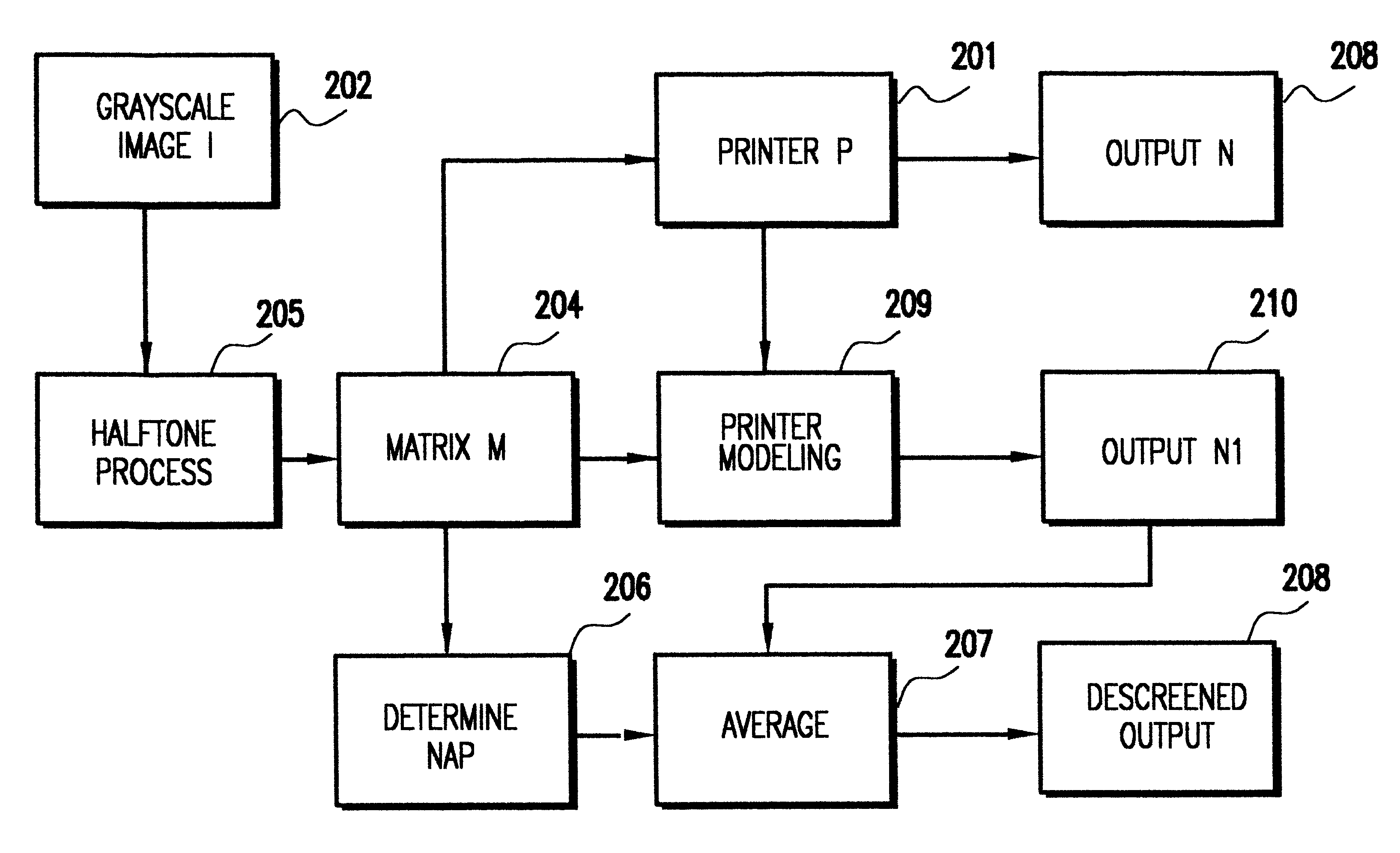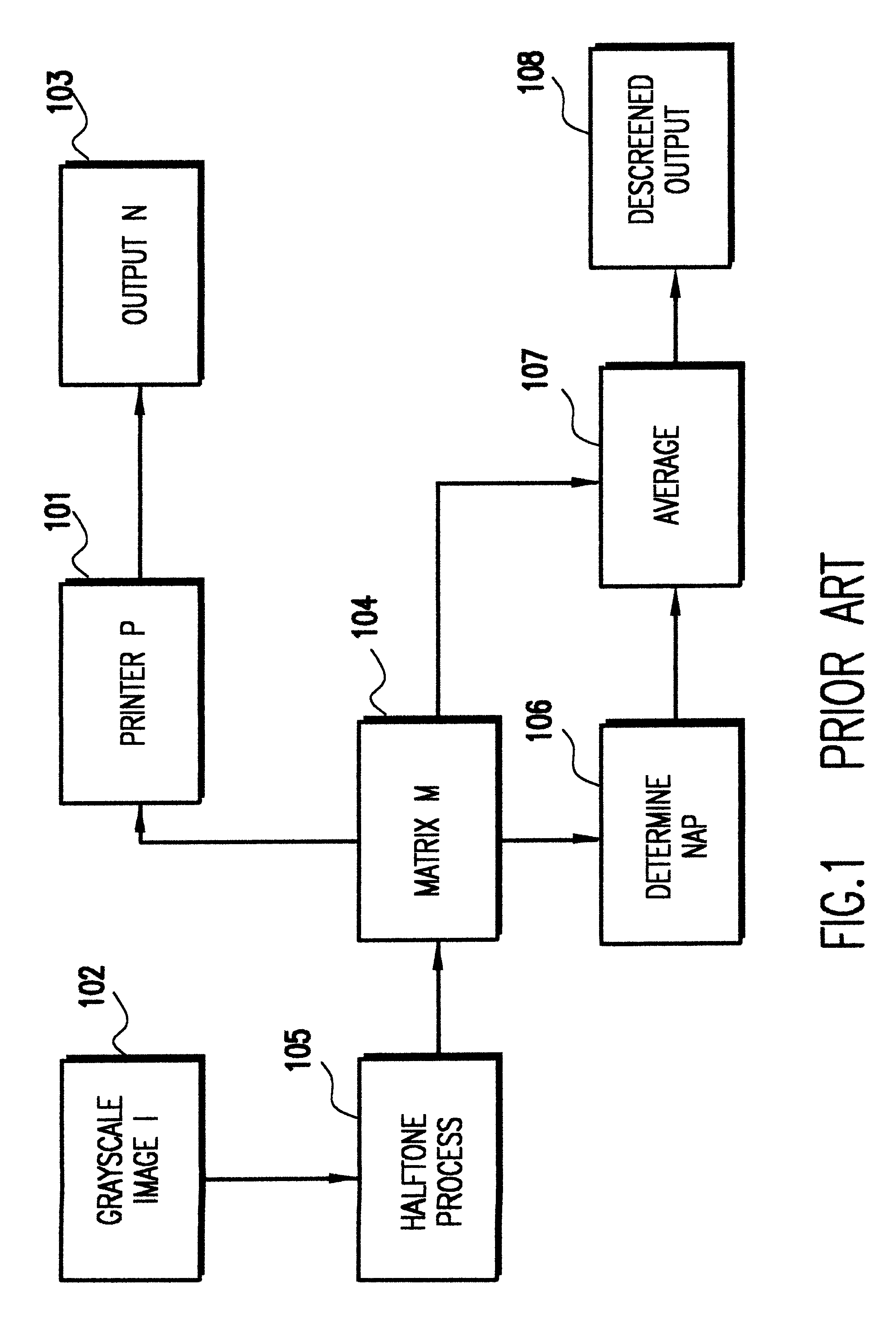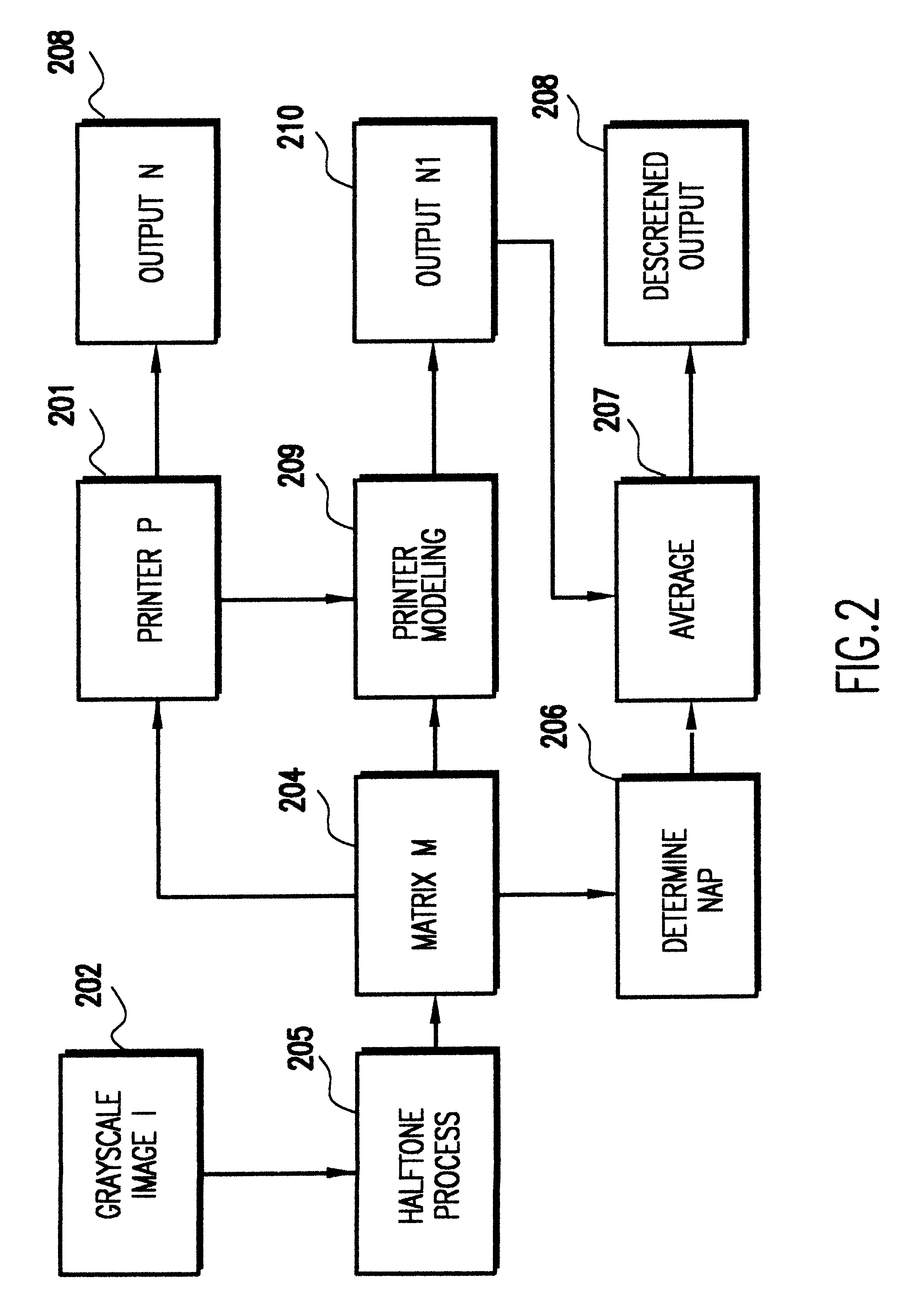Printer dependent descreening method
- Summary
- Abstract
- Description
- Claims
- Application Information
AI Technical Summary
Problems solved by technology
Method used
Image
Examples
Embodiment Construction
Referring again to the drawings, and in particular to FIG. 2, there is shown a preferred embodiment of the invention. As in the descreening apparatus shown in FIG. 1, a grayscale image I 202 is input to a halftone process 205 which provides an output to matrix M 204. The matrix M 204 provides outputs to printer P 201 and NAP determination process 206 as before. However, in this case, the matrix M 204 provides an output to printer modeling process 209, rather than directly to the averaging method 207. Instead, the printer modeling process outputs a matrix N.sub.1 210, which is an approximation of output N 203. The matrix N.sub.1 210 is input to the averaging method 207 to generate the descreened output 208.
The amount of ink being printed at location (i,j) is probabilistically described by probability distributions depending on the local configuration of dots scheduled to be printed by the matrix M in some neighborhood U.sub.1 of (i,j). This general description contains in particular ...
PUM
 Login to View More
Login to View More Abstract
Description
Claims
Application Information
 Login to View More
Login to View More - R&D
- Intellectual Property
- Life Sciences
- Materials
- Tech Scout
- Unparalleled Data Quality
- Higher Quality Content
- 60% Fewer Hallucinations
Browse by: Latest US Patents, China's latest patents, Technical Efficacy Thesaurus, Application Domain, Technology Topic, Popular Technical Reports.
© 2025 PatSnap. All rights reserved.Legal|Privacy policy|Modern Slavery Act Transparency Statement|Sitemap|About US| Contact US: help@patsnap.com



